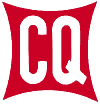The CQWW Phone Contest for 2012 had over 5.2 million QSOs in the more than 8000 logs that were submitted. It takes over 45 minutes to run the log checking software up in the Amazon EC2 Cloud Computing environment. That’s a lot of processing!
A big part of the log checking is to verify each QSO against the other log. Can we find a matching call sign within a time window of when the QSO was logged? In 95% of the cases we do and the points are confirmed. The other 5% of the time, the software must look for other call signs that are off by 1 letter or off by 2 letters. It is amazing how well the computer is able to find a probable match and determine the error.
The concept of a “time window” around the logged QSO time is very important in this process. It is not enough that both stations have the call sign in their log on the same band. They must both have it logged within a window of +/- 15 minutes. If they don’t the computer has no way of knowing that a valid QSO actually occurred and must assign a NIL.
Let’s look at two real-world examples.
Example 1. There were two multi-single stations that reported a QSO with each other in their logs. One had the QSO on day 1. The other had the QSO logged on day 2. Did a valid QSO actually happen? In our opinion, it did not. Because there was no matching call sign in the other log at the time of the QSO, we had no choice but to declare this a Not-In-Log (NIL), which includes a 3x penalty. In this case both stations lost the QSO and the multiplier.
Example 2. One station logs contacts at the correct time. Another station has their clock off by 45 minutes. These QSOs do not match in each log within the time window and therefore both stations are assigned a NIL. It’s a tough break for the station that did everything right, but there is really no way for us to know the QSO actually occurred. It is required that both stations correctly log the QSO including the time! (The log checkers do try to detect these types of time errors that occur across a log and correct them, but proper logging of QSOs remains the responsibility of the entrant.)
Recommendations
- Check the clock on your PC before the contest and make sure the log is recording the correct time in UTC. And that the time remains correct throughout the entire contest! (If your PC clock drifts, take a few minutes to periodically correct it.)
- Log all dupes. If a NIL happens because one side did not log the QSO, the dupe contact may check valid and give both of you credit for the contact (and multiplier).
Exchange Errors
The log checking software does check for correctly logged zones. You need to make sure you copy what the other station says during the exchange and not just trust your logging software to fill in the zone number. This is especially true when working USA stations where the call sign may not correctly indicate the actual location. A good example is working a W6 who lives in Florida and recording zone 3 in your log. If we receive a log from the W6 and see the zone error during the checking, you will lose credit for the QSO.
There is one very popular software package that does not always correct the zone number when the call sign is edited. This can result in zone 35 being assigned to a station in Germany or 13 being assigned to a station in Japan. This will result in a lost QSO when we do the checking. Before you hit the enter key, take a moment to check that the zone in your log matches the call sign!
Errors are a natural part of the game and something to learn from. We want you to keep every point you have earned over the air. The best way to do that is take a little extra care in logging the time and zone information in your log during the contest. The rules prohibit using outside sources or databases to go back after the contest and correct your log.
